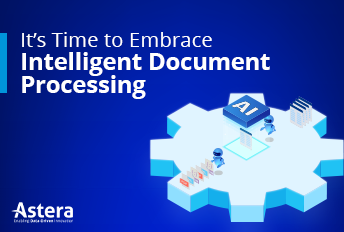
The Intelligent Solution to Process Pharmaceutical Data
Pharmaceutical industry leaders are adopting new artificial intelligence (AI) technologies and increasing process efficiency.
The Infosys report on AI adoption shows that pharmaceuticals are among the most mature industries in Al adoption. In the same report, 40 percent of the respondents claimed their organizations had deployed Al and that it was working as expected. AI-powered features help them manage massive volumes of pharmaceutical data with great accuracy and speed.
One useful AI application is automating and streamlining data management and processing. With data pouring from different formats and sources in documents with varied layouts, pharma companies face an uphill task of processing data with accuracy and speed. That’s where AI comes in—helping them fast-track data flows.
Use Case
Let’s take a look at a common use case among pharmaceutical companies and see how artificial intelligence can solve it.
A global pharmaceutical company has thousands of partner accounts from which it receives files, like patient records, in various formats, including JSON, XLS, CSV, TXT, and XML. These files also vary in terms of layout and naming conventions. For each partner account, the company designs and maintains a separate data flow, which results in extensive resources spent on data ingestion and processing.
The users manually prepare data flows, which involve defining data extraction logic, applying transformations, and writing expressions. Once these data flows are ready, any further changes require manual intervention to accommodate the new requirements.
We’ve had several pharmaceutical companies reach out to us to streamline this process. Learn how we cater to this use case.
Astera Intelligence
Using Astera Intelligence, pharmaceutical companies can consolidate thousands of separate partner account flows into a single, unified data flow.
How Does It Work?
Our solution has AI-based mapping and matching capabilities that come with a four-step mapping mechanism, including exact match, synonym dictionary, semantic match, and custom expressions:
- The exact match fetches data from incoming files that share the same fields as the target layout.
- The semantic match leverages AI capabilities to align fields in the target layout with incoming files.
- The synonym dictionary allows for simple UI-based field associations.
- The expressions allow you to build custom expressions like concatenate, calculation, etc.
AI-based mapping and matching simplifies data flows by automatically detecting file formats and mapping fields accordingly. It reads data from incoming files regardless of their format and layout. The user only needs to create a single data flow to process documents from different partner accounts, significantly reducing time and resources.
This smart document source feature is purpose-built to handle documents with different metadata. For example, it can be customized to ingest data from documents from different date and name formats. For example, a US partner’s document has the date “January 5, 2024” written as 05/01/2024, and a European partner’s document shows it as 01/05/2024.
Our intelligent AI solution automatically detects and converts these date formats to accurately capture the correct date in the desired format.
Similarly, it can identify the first name and last name order. The United States and most of Europe use the “first name, last name” order. But Eastern cultures, like China and Japan, follow the “last name, first name” order. For instance, the first and last names “Robert Smith” or “Mary James” are written as “Smith Robert” or “James Mary”.
Smart AI capabilities can be designed to factor in these nuances and differences to ensure data accuracy.
Documentation and Security
Our smart document source object also comes with smart documentation features. Our source object can read the layout from new files and save the mappings. This capability allows for the documentation and troubleshooting of layouts and mappings, which are dynamically created with each new file processed.
Also, Astera’s AI system only transmits metadata for processing, ensuring compliance with data protection regulations like HIPAA.
Start Your AI Journey with Astera
At Astera, we empower pharma companies to use AI to build fast, flexible, and scalable data pipelines without writing any code. Our smart source document feature simplifies even the most complex datasets. If you have a similar use case and want to streamline your pharmaceutical data processing and management, contact our experts today for a free trial.
 Astera AI Agent Builder - First Look Coming Soon!
Astera AI Agent Builder - First Look Coming Soon!

